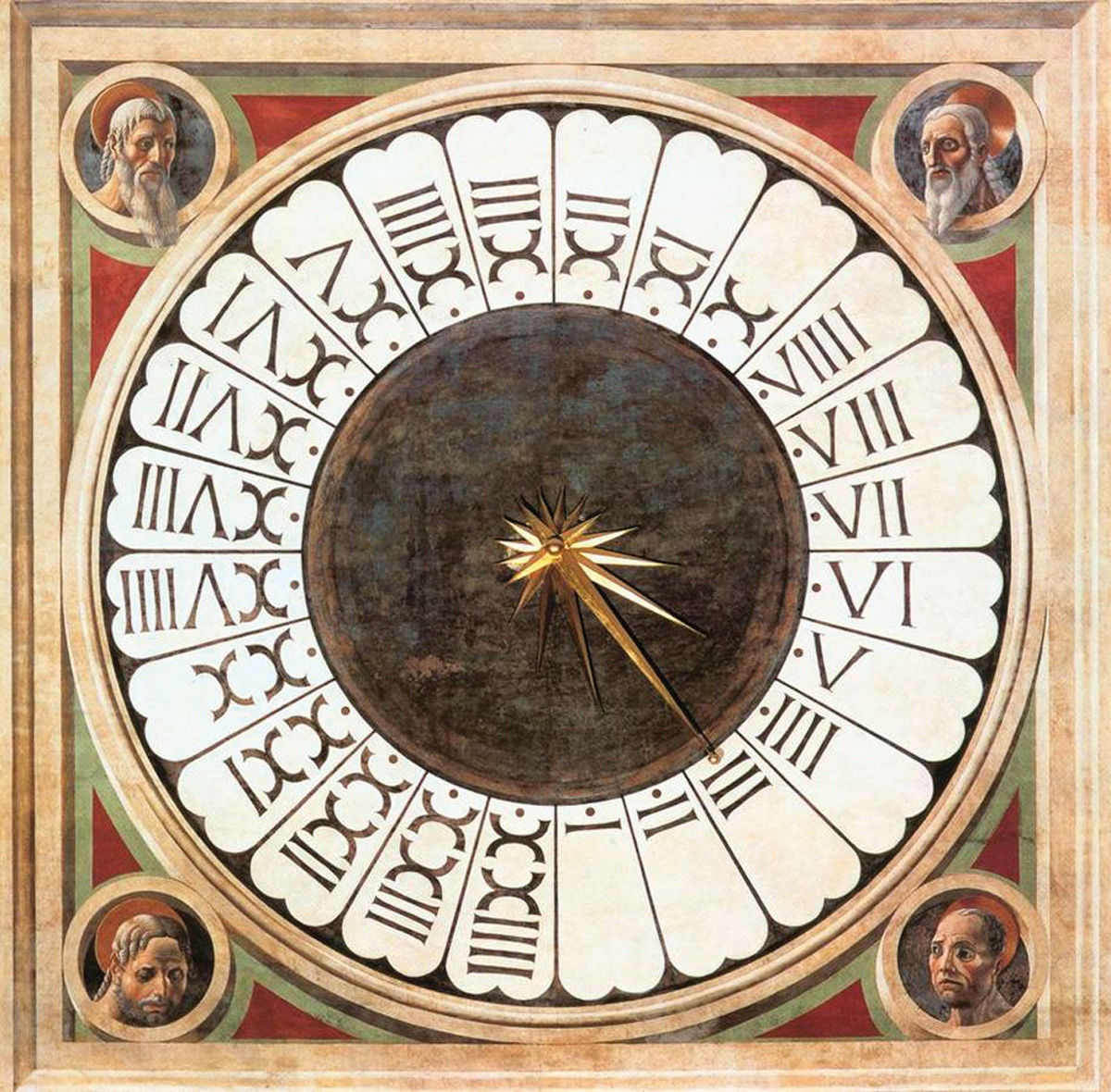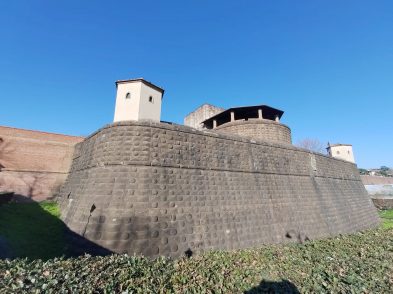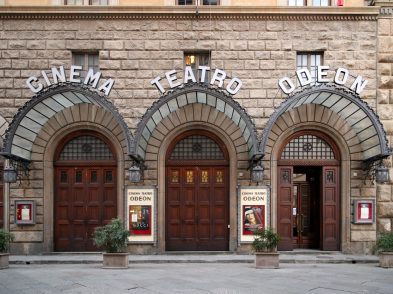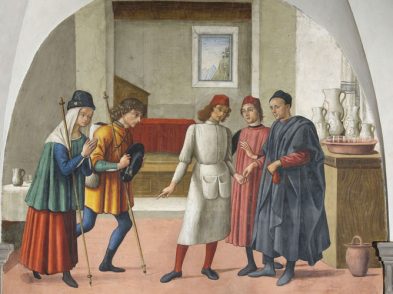The clock above the main door inside the Cathedral of Santa Maria del Fiore, or the Duomo, as it is better known in Florence, is the only one of its kind in working order anywhere in the world. To the modern eye, it looks positively bizarre. At its centre, a golden star decorates the blue disc of the clock’s face, whilst the heads of what are believed to be the four evangelists, Matthew, Mark, Luke and John, are encircled at each corner of the dial’s square frame.

The clock has only one hand, running anti-clockwise from the Roman numeral XXIIII at the bottom, which does not indicate midnight. The clock, in fact, registers the ora italica (‘Italian time’), also known as Bohemian time or Julian time, after Julius Caesar’s 46 CE calendar, which began at sunset and ended at sunset. In the cathedral, the clock’s main purpose was probably liturgical, marking the hour when vespers, the sunset prayer service, began. Also, in the medieval world so dependent on farming, sunset heralded the end of the long working day that began with the first rays of light. Sunset, however, changes throughout the year, which means, even today, the Duomo’s clock must be reset weekly.
Thanks to Giorgio Vasari’s Lives of the Artists, we know that Paolo di Dono (1397–1475), nicknamed ‘Uccello’ because of his love of strange animals and, in particular, birds, was paid 40 lire in February 1443 when he completed frescoing the face of the clock, which is almost 2 meters in diameter and situated 15 meters off the ground. Obsessed as he was with perspective, in this the second of the works this solitary and eccentric painter from Pratovecchio was commissioned to do in the Duomo, Uccello merged light and shadows on each of the prophets’ faces, making the viewer think that light is streaming in from a window (that, in reality, does not exist), high up on the wall to the left of the clock.
The complex workings of the timepiece, with weights, counterweights, wheels and pulleys, were designed by the Florentine clockmaker Angelo di Niccolò. Their housing, a narrow chamber behind the dial, is accessed from steep and narrow steps through a door to the right of the church’s main entrance. Due to its delicacy, the mechanism has required numerous interventions over the years, including a 17th-century addition: a pendulum based on the studies of Italian physicist and astronomer Galileo Galilei and Dutch mathematician and horologist Christiaan Huygens.
During the 15th and 16th centuries, the Transalpine, French or Gregorian system for measuring time was widely used in Northern Europe. Time was measured in units of 12: midnight to noon (ante meridiem) and noon to midnight (post meridiem). The hours were usually represented in Roman numerals and the hands pointing to them operated a left-to-right (or clockwise) movement. This analog system gradually became established as a standard, further reinforced by the spread of mechanical clocks that did not require continuous maintenance.
But Tuscany was not eager to adopt the analog system. Such was the resistance that, in 1749, Grand Duke Francesco Stefano published an edict enforcing this imported method for calculating time and threatening severe punishment to anyone who failed to adopt it. Therefore, during restoration of the mechanism in 1761, Uccello’s clock face was covered by a new 12-hour version.
During this modification, the clock’s original gilded copper hand crafted by the artist also disappeared and a new one was made in the shape of a shooting star. Although the original hand was never recovered, in 1973, after a five-year restoration, Uccello’s clock face is again visible and keeping ora italica.
The most recent restoration of the intricate timepiece, in 2014, was made by the Officine Panerai, the oldest watchmaking firm in Florence. The original Panerai shop and laboratory opened in 1860 and was situated on the Ponte alle Grazie. In the early 1900s, it transferred to the Archbishop’s Palace in piazza San Giovanni, just in front of the Duomo, where, fittingly, it is close by its most unusual ‘client’.
And should you ever hear an Italian mentioning that someone is wearing his hat sulle ventitré (‘on the 23’), give a thought to the ora italica and Uccello’s clock: the saying originated from cocking one’s hat at a steep angle to protect the eyes against the blinding rays of the sun when they are low on the horizon in the hour before sunset.








